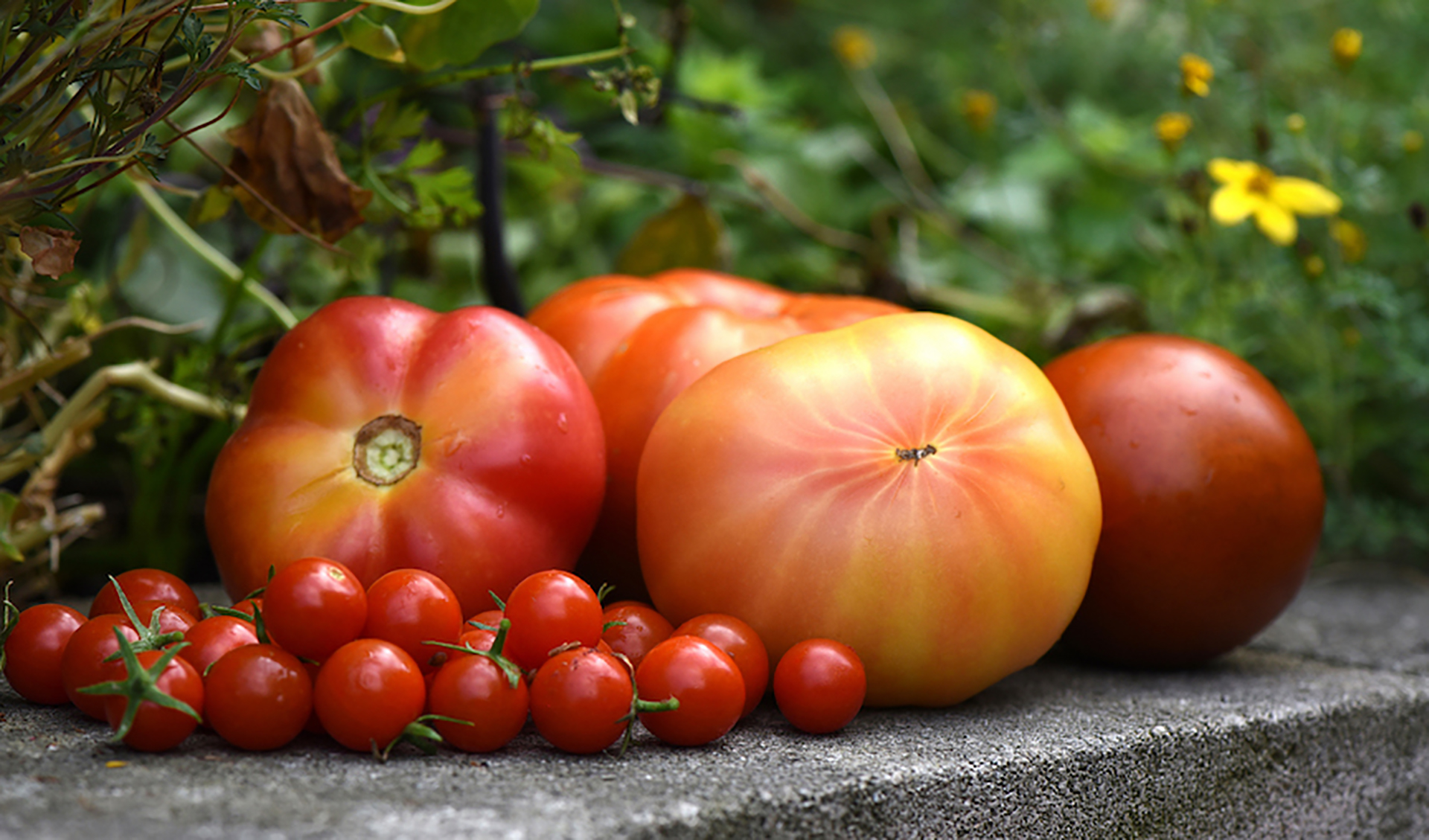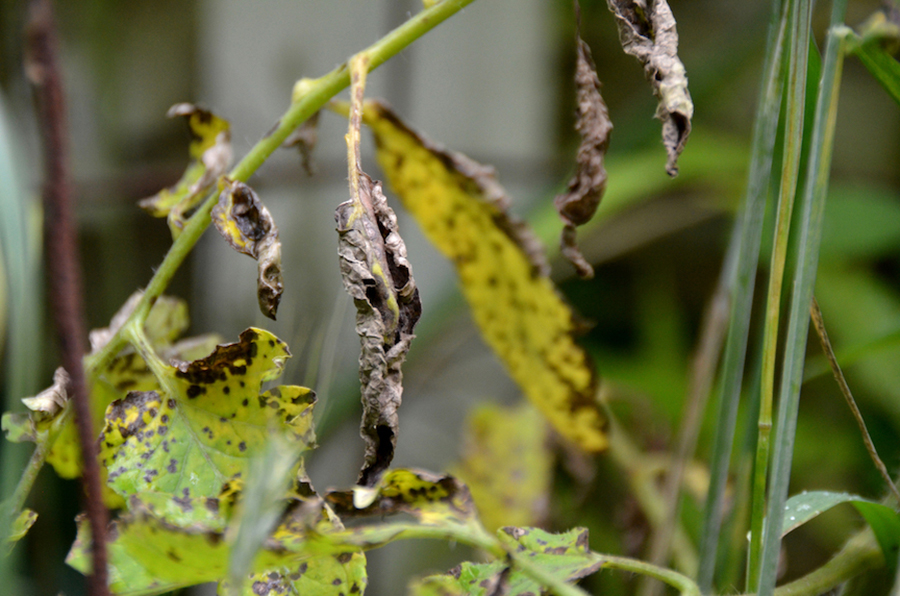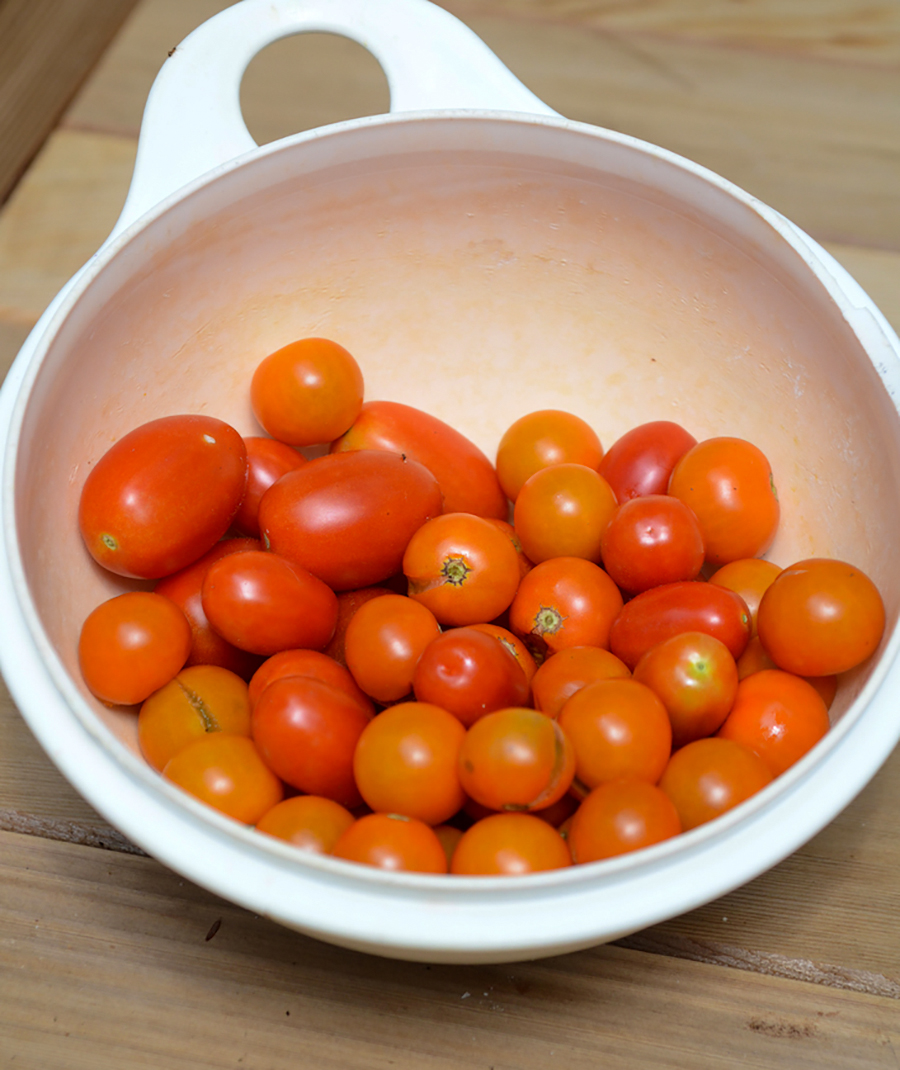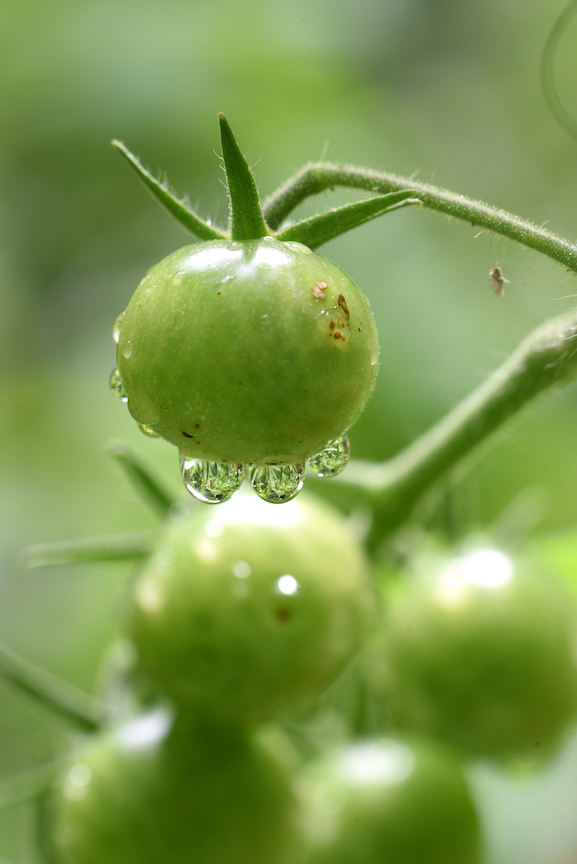Doug’s Ultimate Guide To Growing Your Own Tomatoes


By Doug Oster
After an early morning downpour followed by gray skies and imminent showers, the time was right to plant the first crop of tomatoes. There is a certain joy when the stars align in the garden. Oftentimes, things are so busy, planting happens when conditions are less than perfect.
There is no hurry to get them in the ground, as tomatoes (and peppers) dislike cold soil and air temperatures. It’s sad to see gardeners already struggling with fungal issues on their plants after an early planting during false spring.
It’s a hard lesson to learn in the race for the first tomato of the year. Mom said wait until Memorial Day — and she’s never wrong — at least I’m not going to be the one to tell her.
There’s nothing wrong with experimenting with a few plants by putting them in the ground early. With a few tricks to keep them happy — like warming the soil and protecting them — local farmers can offer the earliest field-grown fruit.
It is the homegrown tomato though which is the gold standard. Nothing can compare to standing barefoot in the garden biting into a juicy beefsteak or feasting on handfuls of sweet cherry tomatoes warmed by the afternoon sun.
The first bed to be planted was prepared in April with a couple of wheelbarrows of black compost dumped on top of the planting area. That was then covered with a clear plastic skylight to heat up the compost, which was removed during rainy days.
It’s the first step in avoiding the two main fungal issues tomatoes face, septoria leaf spot and early blight.

They turn leaves yellow with brown spots, starting at the bottom of the plant and working upwards. Although the problems usually don’t kill the plant the fungal issues will slow them down.
After gently nestling a transplant into the compost, it is immediately mulched. This will hopefully stop fungal spores from splashing up on the bottom leaves of the plant. The lower foliage is removed to make the distance between the spores and the plant greater.
If the season ends up with a cool, wet start, an organic fungicide will help keep the fungal issues in check. It’s actually most effective if applied before seeing signs of damage. Watch the weather to decide when the time is right to use the product.
Growing lots of different varieties will also help as each one reacts differently to the diseases. Look for early, mid-season and tomatoes which produce later in the season to stagger the harvest.
It is succession planting though, which has been most effective in battling fungal disease for tomatoes in my garden.
The first planting happens now, but space is saved for subsequent plantings. Tomato plants put into the soil in June will love the warm temperatures all the way around. They will catch up to the earlier plantings.
Varieties that are ready faster, can be planted as late as July 4th. Planting an ‘Early Girl’, ‘Sungold’, ‘Red Racer’, ‘Fourth of July’ or other early producers can be harvested as the season ends, from plants that are rarely affected by fungal diseases.
The best days for planting are cloudy and cool. Leave a slight depression on the surface around the plant to catch rainwater. If the weather doesn’t cooperate and the plants need to go in, wait until the end of the day so the young plants get a little bit of time to prepare for the morning sun.
Horizontal planting
Since tomato stems will produce roots, they can be turned on their sides and planted. This is especially effective for plants that are tall and leggy. Dig a shallow trench an inch or two deep, as long as the plant is tall. Before planting, strip off all the bottom leaves and gently lay the plant horizontally in the trench. Cover the stem with the backfill or compost and then mulch, leaving the top of the plant alone. It will turn upwards in a day, be sure you know where the roots are, I’ve had more than one friend pound a tomato stake right through the underground stem.
Using this technique, the plant produces lots of roots, which will enjoy being close to the warm sun and only inches away from moisture in the form of rain or from the hose.
Tomatoes in containers
The best way to grow tomatoes in pots, in my opinion, is using something called a self-watering container. If tomatoes dry out either in the garden or container, they often get something called blossom end rot. It’s caused by a lack of calcium, that nutrient is usually in the soil, but can’t reach the plant unless the soil is moist.
One brand of self-watering pot is called an Earth Box. Two full-sized tomatoes can be grown in one of the containers.
The self-watering containers have a reservoir under a shelf that holds the planting mix. As long as the reservoir has water, the plant won’t dry out and should be free of blossom end rot.
If a conventional pot is to be used, 15 gallons or bigger is recommended. The more mass of planting mix in the container, the longer it will stay moist. Don’t ever let the container dry out, as you’ll be inviting blossom end rot.
Consider tomato varieties that are bred to stay stocky for container growing, a favorite is ‘Super Bush,’ but there are many different cultivars.
Feeding the plants is important too. I love a liquid organic fertilizer called Drammatic from the Dramm Corporation. It’s fish-based, smells like low tide when applied, and makes plants grow. No one is paying me to say that, I’ve convinced two local nurseries to carry the concentrate. It can be found at Hahn Nursery in Ross and Chapon’s Greenhouse in Baldwin.
Water the right way
Before the soil dries out under the mulch soak the plants by watering at the base and in the morning. Since tomatoes are prone to fungal diseases, it’s important to try and keep the foliage dry.
Watering in the morning will allow leaves to dry out as the day progresses.
It’s good to get the water down deep and the plants only need watered once a week when in the garden. Possibly more often when planted in pots.

Support your local tomatoes
Tomatoes will be healthier if grow up stakes, trellis’ or cages. Give them plenty of room to breathe too, which will cut down on diseases. It’s important to have sturdy support for the plants. Many of the cages sold in stores are better suited for peppers.
A healthy, full-sized tomato will get huge when grown in good soil.
Homemade cages using sections of five-foot-long concrete reinforcing wire formed into a circular cage will last for decades and give great support for plants. I pound a tomato stake in the ground and attach the cage. The plants can get big enough to topple the cage otherwise.
Tomatoes are a staple of the home vegetable garden, and a summer tradition best enjoyed right out in the garden.

Some of Doug’s Favorite Varieties:
‘Sundgold’ cherry
‘Heart of Italy’
‘Cherokee Purple’
‘Mortgage Lifter’
‘Juliet’
‘Red Racer’


